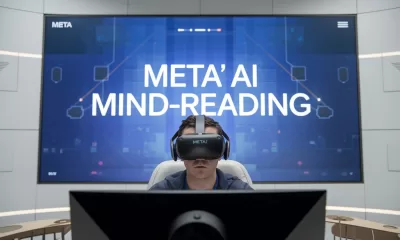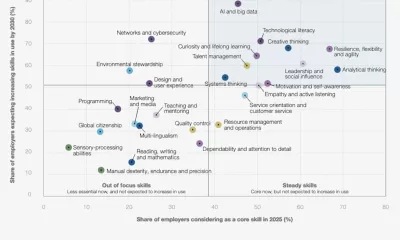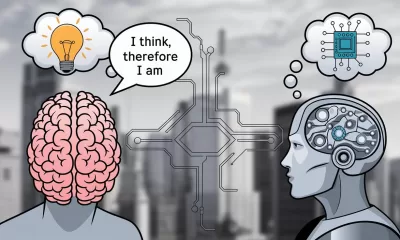News
Unearthly Tech? AI’s Bizarre Chip Design Leaves Experts Flummoxed
An international team of engineers has used AI to design a wireless chip layout that defies human understanding, hinting at the future of AI-powered hardware design.
Published
3 months agoon
By
AIinAsia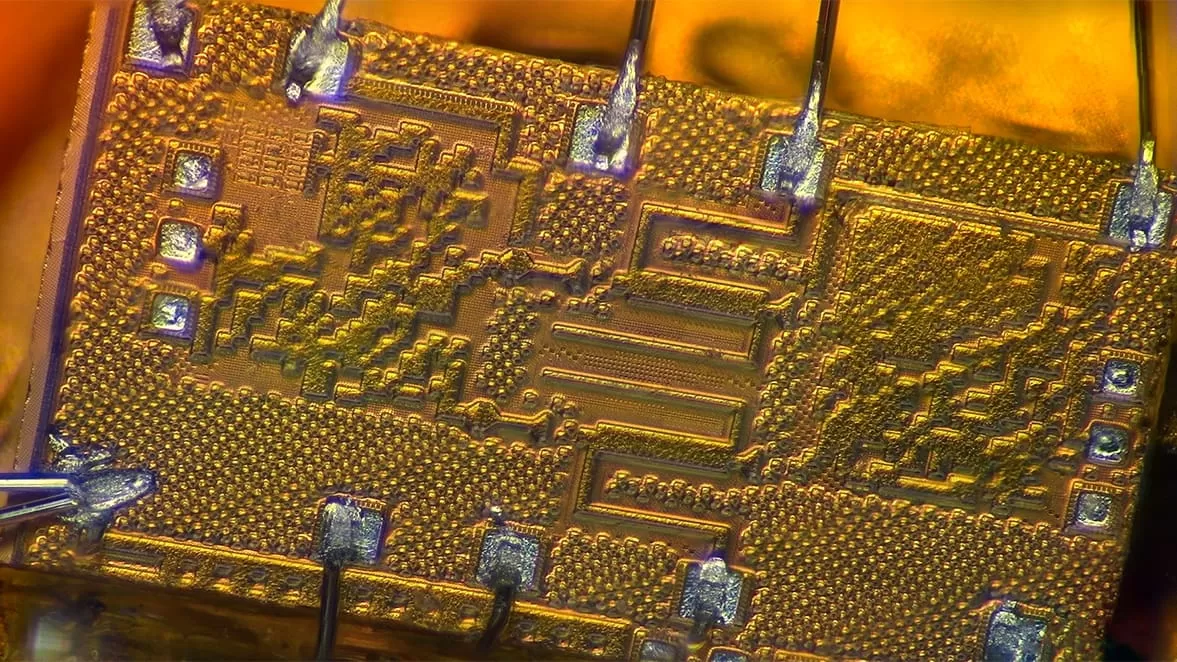
TL;DR – What You Need to Know in 30 Seconds
- AI Chip Designs Outperform Humans: A new study in Nature shows that AI can generate wireless chip layouts that work better than those humans typically devise.
- Alien-Like Geometry: The resulting designs look bizarre, and even experts have trouble understanding exactly how they work.
- Fast-Growing Industry: The millimetre-wave wireless chip market, valued at around $4.5 billion, is expected to triple over the next six years (Sengupta et al., 2023). AI design could become a game-changer in meeting that demand.
- Not a Total Human Replacement: While the AI can produce awe-inspiring (and sometimes baffling) layouts, human engineers are still essential to ensure the chips are functional and safe.
So What is This AI Alien Chip All ABout?
If you’ve been paying any attention to the world of high-tech gadgets lately, you’ll know that our devices just keep getting smarter, faster, and more efficient. But how would you feel if you discovered that an AI — effectively an “alien intelligence” — was behind designing the very chips you depend on every single day? Talk about your smartphone feeling a wee bit out of this world!
The fascinating twist is that researchers have recently developed an artificial intelligence system capable of churning out wireless chip designs that, while effective, have left the folks behind it scratching their heads. The chip layouts, described in research published in the journal Nature (Sengupta et al., 2023), don’t exactly look like something a human mind would dream up:
They look randomly shaped… Humans cannot really understand them.
And yet, these alien-looking shapes work better than many chips crafted by us mere mortals.
A Quick Overview of the Research
An international team of engineers used a deep learning algorithm to produce brand-new, highly optimised wireless microchip designs. Not only did these chips exceed the performance of their human-designed counterparts, but their geometry was so perplexing that even experts couldn’t quite figure out the “why” behind their success. It’s as if our AI overlords already speak a different language altogether.
In fact, the designs were so strange that they sparked conversations likening AI to an alien form of intelligence. Well-known academics such as Harvard’s Avi Loeb have previously suggested that we can think of advanced AI as more “alien” than “human” in its cognitive processes. And this project seems to back that up. At times, not even the designers of AI truly grasp how it’s thinking.
But let’s not get ahead of ourselves. Lead researcher Kaushik Sengupta emphasises that AI is meant to be a tool — one that can save time and let humans focus on creativity and innovation.
As he explains, reminding us that the best approach is to merge the brilliance of human ingenuity with the raw computational power of deep learning.
There are pitfalls that still require human designers to correct,
The (Very) Human Problem of Chip Design
Traditional chip design is laborious. Whether it’s for your phone, laptop, or the radar system guiding air traffic, engineers rely on expert knowledge, classical design templates, and a significant amount of trial and error. The result? It can take weeks or even months to refine a new design.
But that’s just the start. After the layouts are initially created, you have to test them in simulations, tweak, repeat, and eventually move on to real-life prototypes — possibly many times over. And even after all that, the geometry of some cutting-edge chips can be so complicated that it’s really tough to grasp what’s going on.
Enter AI and Inverse Synthesis
With the new approach the Princeton-led team used, you start with the desired outcome (like a certain frequency range or power output) and then let AI figure out the geometry needed to achieve those specs. They call it “inverse synthesis,” and it’s a bit like giving AI the final picture in a jigsaw puzzle and asking it to generate all the pieces.
Deep learning excels in pattern recognition and can handle tasks involving complex data structures. But the “alien” aspect creeps in when we realise that deep learning doesn’t necessarily adhere to human logic or aesthetics. It might create odd lumps and squiggles that don’t make sense at first glance — yet they tick all the right boxes for performance.
The human mind is best utilised to create or invent new things, and the more mundane, utilitarian work can be offloaded to these tools
Let’s keep that in mind the next time we worry about AI taking over our jobs.

AI’s Faulty “Hallucinations”
AI doesn’t always get it right. In fact, sometimes it churns out total nonsense. The researchers found that the same system capable of fabricating record-breaking designs would just as quickly create faulty monstrosities — chips that wouldn’t work at all in practical tests.
And that’s precisely why human oversight remains crucial. If you imagine a future where we unleash AI to design the next generation of everything, from medical devices to nuclear facility components, you can also imagine the potential risks if there’s no one around to say, “Hang on, that’s nonsense.” So while these breakthroughs are jaw-dropping, they’re also sobering reminders of AI’s limitations.
A $4.5 Billion Opportunity
Millimetre-wave wireless chips form a massive $4.5 billion market today, a figure projected to triple in size over the next six years (Sengupta et al., 2023). That’s a potential goldmine for AI-based design solutions — or perhaps an “alienmine” if we keep up the cosmic analogy. And yes, expect to see these strange new designs in everything from advanced radars to next-generation smartphones.
Looking Ahead
For now, the AI system focuses on smaller electromagnetic structures. But where the real magic lies is in scaling up, chaining these structures together to form more intricate circuits. If you think a Wi-Fi chip looks complicated now, just wait until AI starts connecting thousands or even millions of these “alien” components.
We might soon reach a point where no single engineer can fully grasp the entire design of a system because of its complexity — not just from the standpoint of manufacturing but at the very conceptual level. And that begs the question: at what point does technology become so advanced that we can’t meaningfully explain it anymore?
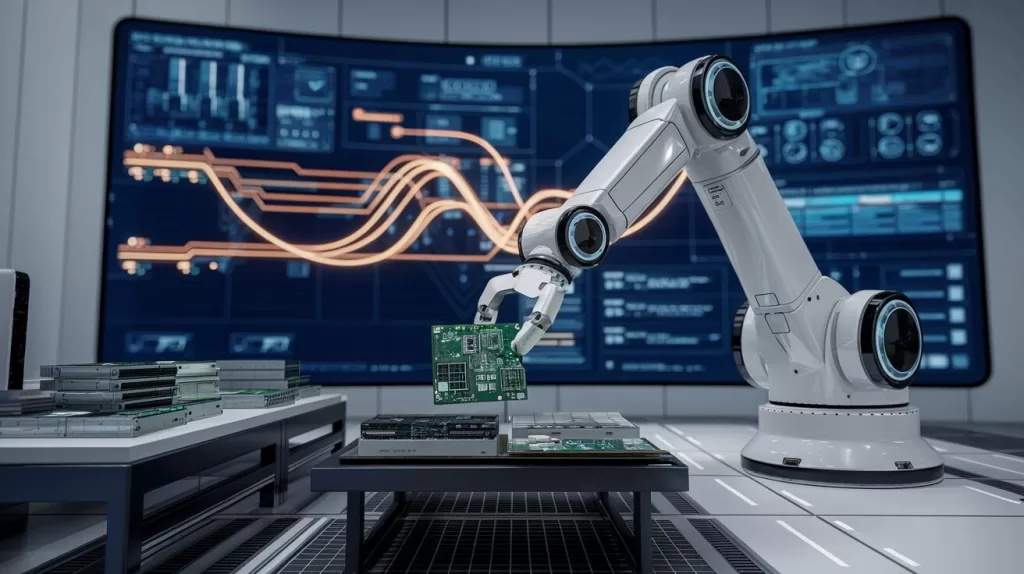
Bridging the Gap Between Humans and AI
Despite the somewhat sci-fi vibe, there’s room for humans and AI to collaborate harmoniously. AI can break down the barriers of our imagination, while humans can do the vital sanity-checking and fine-tuning needed. As Sengupta puts it: “The point is not to replace human designers with tools. The point is to enhance productivity with new tools” (Sengupta et al., 2023).
And here at AIinASIA, we’re always excited to see how tech can spark leaps forward in every field — especially when it unearths new ways to manage the complexities of hardware design that can support our ever-growing digital demands.
Wrapping Up
So, there you have it: alien-esque chips conjured by AI, promising faster processing and new frontiers in wireless technology — and leaving a bunch of brilliant researchers mildly baffled. Perhaps we’re finally catching a glimpse of a future where machines don’t just assist us, but actively forge paths we couldn’t dream of. The question that remains is: how do you feel about relying on alien-like AI designs for the technology that powers your life?
You may also like:
- The AI Chip Race: US Plans New Restrictions on China’s Tech Access
- Delays Impacting the Shape of the Tech Landscape
- Read more on Princeton Engineering’s website by tapping here.
Author
Discover more from AIinASIA
Subscribe to get the latest posts sent to your email.
You may like
-


If AI Kills the Open Web, What’s Next?
-


How Did Meta’s AI Achieve 80% Mind-Reading Accuracy?
-


How to Prepare for AI’s Impact on Your Job by 2030
-


How Will AI Skills Impact Your Career and Salary in 2025?
-


We (Sort Of) Missed the Mark with Digital Transformation
-


Reality Check: The Surprising Relationship Between AI and Human Perception
News
If AI Kills the Open Web, What’s Next?
Exploring how AI is transforming the open web, the rise of agentic AI, and emerging monetisation models like microtransactions and stablecoins.
Published
5 days agoon
May 28, 2025By
AIinAsia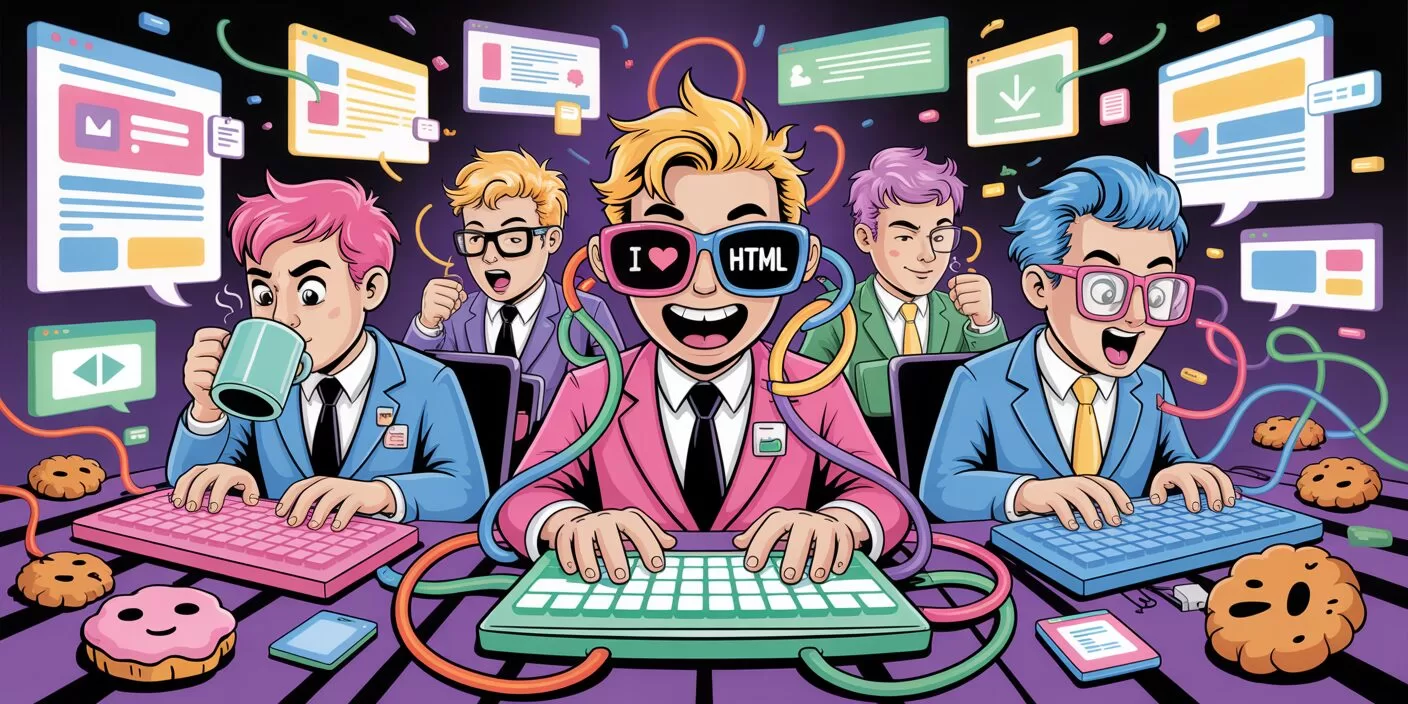
The web is shifting from human-readable pages to machine-mediated experiences with AI impacting the future of the open web. What comes next may be less open—but potentially more useful.
TL;DR — What You Need To Know
- AI is reshaping web navigation: Google’s AI Overviews and similar tools provide direct answers, reducing the need to visit individual websites.
- Agentic AI is on the rise: Autonomous AI agents are beginning to perform tasks like browsing, shopping, and content creation on behalf of users.
- Monetisation models are evolving: Traditional ad-based revenue is declining, with microtransactions and stablecoins emerging as alternative monetisation methods.
- The open web faces challenges: The shift towards AI-driven interactions threatens the traditional open web model, raising concerns about content diversity and accessibility.
The Rise of Agentic AI
The traditional web, characterised by human users navigating through hyperlinks and search results, is undergoing a transformation. AI-driven tools like Google’s AI Overviews now provide synthesised answers directly on the search page, reducing the need for users to click through to individual websites.
This shift is further amplified by the emergence of agentic AI—autonomous agents capable of performing tasks such as browsing, shopping, and content creation without direct human intervention. For instance, Opera’s new AI browser, Opera Neon, can automate internet tasks using contextual awareness and AI agents.
These developments suggest a future where AI agents act as intermediaries between users and the web, fundamentally altering how information is accessed and consumed.
Monetisation in the AI Era
The traditional ad-based revenue model that supported much of the open web is under threat. As AI tools provide direct answers, traffic to individual websites declines, impacting advertising revenues.
In response, new monetisation strategies are emerging. Microtransactions facilitated by stablecoins offer a way for users to pay small amounts for content or services, enabling creators to earn revenue directly from consumers. Platforms like AiTube are integrating blockchain-based payments, allowing creators to receive earnings through stablecoins across multiple protocols.
This model not only provides a potential revenue stream for content creators but also aligns with the agentic web’s emphasis on seamless, automated interactions.
The Future of the Open Web
The open web, once a bastion of free and diverse information, is facing significant challenges. The rise of AI-driven tools and platforms threatens to centralise information access, potentially reducing the diversity of content and perspectives available to users.
However, efforts are underway to preserve the open web’s principles. Initiatives like Microsoft’s NLWeb aim to create open standards that allow AI agents to access and interact with web content in a way that maintains openness and interoperability.
The future of the web may depend on balancing the efficiency and convenience of AI-driven tools with the need to maintain a diverse and accessible information ecosystem.
What Do YOU Think?
As AI impacts the future of the open web, we must consider how to preserve the values of openness, diversity, and accessibility. How can we ensure that the web remains a space for all voices, even as AI agents become the primary means of navigation and interaction?
You may also like:
- Top 10 AI Trends Transforming Asia by 2025
- Build Your Own Agentic AI — No Coding Required
- Is AI Really Paying Off? CFOs Say ‘Not Yet’
- Or tap here to explore the free version of Claude AI.
Author
Discover more from AIinASIA
Subscribe to get the latest posts sent to your email.
News
GPT-5 Is Less About Revolution, More About Refinement
This article explores OpenAI’s development of GPT-5, focusing on improving user experience by unifying AI tools and reducing the need for manual model switching. It includes insights from VP of Research Jerry Tworek on token growth, benchmarks, and the evolving role of humans in the AI era.
Published
2 weeks agoon
May 22, 2025By
AIinAsia
OpenAI’s next model isn’t chasing headlines—it’s building a smoother, smarter user experience with fewer interruptions the launch of GPT-5 unified tools.
TL;DR — What You Need To Know
- GPT-5 aims to unify OpenAI’s tools, reducing the need for switching between models
- The Operator screen agent is due for an upgrade, with a push towards becoming a desktop-level assistant
- Token usage continues to rise, suggesting growing AI utility and infrastructure demand
- Benchmarks are losing their relevance, with real-world use cases taking centre stage
- OpenAI believes AI won’t replace humans but may reshape human labour roles
A more cohesive AI experience, not a leap forward
While GPT-4 dazzled with its capabilities, GPT-5 appears to be a quieter force, according to OpenAI’s VP of Research, Jerry Tworek. Speaking during a recent Reddit Q&A with the Codex team, Tworek described the new model as a unifier—not a disruptor.
“We just want to make everything our models can currently do better and with less model switching,” Tworek said. That means streamlining the experience so users aren’t constantly toggling between tools like Codex, Operator, Deep Research and memory functions.
For OpenAI, the future lies in integration over invention. Instead of introducing radically new features, GPT-5 focuses on making the existing stack work together more fluidly. This approach marks a clear departure from the hype-heavy rollouts often associated with new model versions.
Operator: from browser control to desktop companion
One of the most interesting pieces in this puzzle is Operator, OpenAI’s still-experimental screen agent. Currently capable of basic browser navigation, it’s more novelty than necessity. But that may soon change.
An update to Operator is expected “soon,” with Tworek hinting it could evolve into a “very useful tool.” The goal? A kind of AI assistant that handles your screen like a power user, automating online tasks without constantly needing user prompts.
The update is part of a broader push to make AI tools feel like one system, rather than a toolkit you have to learn to assemble. That shift could make screen agents like Operator truly indispensable—especially in Asia, where mobile-first behaviour and app fragmentation often define the user journey.
Integration efforts hit reality checks
Originally, OpenAI promised that GPT-5 would merge the GPT and “o” model series into a single omnipotent system. But as with many grand plans in AI, the reality was less elegant.
In April, CEO Sam Altman admitted the challenge: full integration proved more complex than expected. Instead, the company released o3 and o4-mini as standalone models, tailored for reasoning.
Tworek confirmed that the vision of reduced model switching is still alive—but not at the cost of model performance. Users will still see multiple models under the hood; they just might not have to choose between them manually.
Tokens and the long road ahead
If you think the token boom is a temporary blip, think again. Tworek addressed a user scenario where AI assistants might one day process 100 tokens per second continuously, reading sensors, analysing messages, and more.
That, he says, is entirely plausible. “Even if models stopped improving,” Tworek noted, “they could still deliver a lot of value just by scaling up.”
This perspective reflects a strategic bet on infrastructure. OpenAI isn’t just building smarter models; it’s betting on broader usage. Token usage becomes a proxy for economic value—and infrastructure expansion the necessary backbone.
Goodbye benchmarks, hello real work
When asked to compare GPT with rivals like Claude or Gemini, Tworek took a deliberately contrarian stance. Benchmarks, he suggested, are increasingly irrelevant.
“They don’t reflect how people actually use these systems,” he explained, noting that many scores are skewed by targeted fine-tuning.
Instead, OpenAI is doubling down on real-world tasks as the truest test of model performance. The company’s ambition? To eliminate model choice altogether. “Our goal is to resolve this decision paralysis by making the best one.”
The human at the helm
Despite AI’s growing power, Tworek offered a thoughtful reminder: some jobs will always need humans. While roles will evolve, the need for oversight won’t go away.
“In my view, there will always be work only for humans to do,” he said. The “last job,” he suggested, might be supervising the machines themselves—a vision less dystopian, more quietly optimistic.
For Asia’s fast-modernising economies, that might be a signal to double down on education, critical thinking, and human-centred design. The jobs of tomorrow may be less about doing, and more about directing.
You May Also Like:
- ChatGPT-5 Is Coming in 2024: Sam Altman
- Revolutionise Your Designs with Canva’s AI-Powered Magic Tools
- Revolutionising Critical Infrastructure: How AI is Becoming More Reliable and Transparent
- Or tap here to try the free version of ChatGPT.
Author
Discover more from AIinASIA
Subscribe to get the latest posts sent to your email.
Business
Apple’s China AI pivot puts Washington on edge
Apple’s partnership with Alibaba to deliver AI services in China has sparked concern among U.S. lawmakers and security experts, highlighting growing tensions in global technology markets.
Published
2 weeks agoon
May 21, 2025By
AIinAsia
As Apple courts Alibaba for its iPhone AI partnership in China, U.S. lawmakers see more than just a tech deal taking shape.
TL;DR — What You Need To Know
- Apple has reportedly selected Alibaba’s Qwen AI model to power its iPhone features in China
- U.S. lawmakers and security officials are alarmed over data access and strategic implications
- The deal has not been officially confirmed by Apple, but Alibaba’s chairman has acknowledged it
- China remains a critical market for Apple amid declining iPhone sales
- The partnership highlights the growing difficulty of operating across rival tech spheres
Apple Intelligence meets the Great Firewall
Apple’s strategic pivot to partner with Chinese tech giant Alibaba for delivering AI services in China has triggered intense scrutiny in Washington. The collaboration, necessitated by China’s blocking of OpenAI services, raises profound questions about data security, technological sovereignty, and the intensifying tech rivalry between the United States and China. As Apple navigates declining iPhone sales in the crucial Chinese market, this partnership underscores the increasing difficulty for multinational tech companies to operate seamlessly across divergent technological and regulatory environments.
Apple Intelligence Meets Chinese Regulations
When Apple unveiled its ambitious “Apple Intelligence” system in June, it marked the company’s most significant push into AI-enhanced services. For Western markets, Apple seamlessly integrated OpenAI’s ChatGPT as a cornerstone partner for English-language capabilities. However, this implementation strategy hit an immediate roadblock in China, where OpenAI’s services remain effectively banned under the country’s stringent digital regulations.
Faced with this market-specific challenge, Apple initiated discussions with several Chinese AI leaders to identify a compliant local partner capable of delivering comparable functionality to Chinese consumers. The shortlist reportedly included major players in China’s burgeoning AI sector:
- Baidu, known for its Ernie Bot AI system
- DeepSeek, an emerging player in foundation models
- Tencent, the social media and gaming powerhouse
- Alibaba, whose open-source Qwen model has gained significant attention
While Apple has maintained its characteristic silence regarding partnership details, recent developments strongly suggest that Alibaba’s Qwen model has emerged as the chosen solution. The arrangement was seemingly confirmed when Alibaba’s chairman made an unplanned reference to the collaboration during a public appearance.
“Apple’s decision to implement a separate AI system for the Chinese market reflects the growing reality of technological bifurcation between East and West. What we’re witnessing is the practical manifestation of competing digital sovereignty models.”
Washington’s Mounting Concerns
The revelation of Apple’s China-specific AI strategy has elicited swift and pronounced reactions from U.S. policymakers. Members of the House Select Committee on China have raised alarms about the potential implications, with some reports indicating that White House officials have directly engaged with Apple executives on the matter.
Representative Raja Krishnamoorthi of the House Intelligence Committee didn’t mince words, describing the development as “extremely disturbing.” His reaction encapsulates broader concerns about American technological advantages potentially benefiting Chinese competitors through such partnerships.
Greg Allen, Director of the Wadhwani A.I. Centre at CSIS, framed the situation in competitive terms:
“The United States is in an AI race with China, and we just don’t want American companies helping Chinese companies run faster.”
The concerns expressed by Washington officials and security experts include:
- Data Sovereignty Issues: Questions about where and how user data from AI interactions would be stored, processed, and potentially accessed
- Model Training Advantages: Concerns that the vast user interactions from Apple devices could help improve Alibaba’s foundational AI models
- National Security Implications: Worries about whether sensitive information could inadvertently flow through Chinese servers
- Regulatory Compliance: Questions about how Apple will navigate China’s content restrictions and censorship requirements
In response to these growing concerns, U.S. agencies are reportedly discussing whether to place Alibaba and other Chinese AI companies on a restricted entity list. Such a designation would formally limit collaboration between American and Chinese AI firms, potentially derailing arrangements like Apple’s reported partnership.
Commercial Necessities vs. Strategic Considerations
Apple’s motivation for pursuing a China-specific AI solution is straightforward from a business perspective. China remains one of the company’s largest and most important markets, despite recent challenges. Earlier this spring, iPhone sales in China declined by 24% year over year, highlighting the company’s vulnerability in this critical market.
Without a viable AI strategy for Chinese users, Apple risks further erosion of its market position at precisely the moment when AI features are becoming central to consumer technology choices. Chinese competitors like Huawei have already launched their own AI-enhanced smartphones, increasing pressure on Apple to respond.
“Apple faces an almost impossible balancing act. They can’t afford to offer Chinese consumers a second-class experience by omitting AI features, but implementing them through a Chinese partner creates significant political exposure in the U.S.
The situation is further complicated by China’s own regulatory environment, which requires foreign technology companies to comply with data localisation rules and content restrictions. These requirements effectively necessitate some form of local partnership for AI services.
A Blueprint for the Decoupled Future?
Whether Apple’s partnership with Alibaba proceeds as reported or undergoes modifications in response to political pressure, the episode provides a revealing glimpse into the fragmenting global technology landscape.
As digital ecosystems increasingly align with geopolitical boundaries, multinational technology firms face increasingly complex strategic decisions:
- Regionalised Technology Stacks: Companies may need to develop and maintain separate technological implementations for different markets
- Partnership Dilemmas: Collaborations beneficial in one market may create political liabilities in others
- Regulatory Navigation: Operating across divergent regulatory environments requires sophisticated compliance strategies
- Resource Allocation: Developing market-specific solutions increases costs and complexity
What we’re seeing with Apple and Alibaba may become the norm rather than the exception. The era of frictionless global technology markets is giving way to one where regional boundaries increasingly define technological ecosystems.
Looking Forward
For now, Apple Intelligence has no confirmed launch date for the Chinese market. However, with new iPhone models traditionally released in autumn, Apple faces mounting time pressure to finalise its AI strategy.
The company’s eventual approach could signal broader trends in how global technology firms navigate an increasingly bifurcated digital landscape. Will companies maintain unified global platforms with minimal adaptations, or will we see the emergence of fundamentally different technological experiences across major markets?
As this situation evolves, it highlights a critical reality for the technology sector: in an era of intensifying great power competition, even seemingly routine business decisions can quickly acquire strategic significance.
You May Also Like:
- Alibaba’s AI Ambitions: Fueling Cloud Growth and Expanding in Asia
- Apple Unleashes AI Revolution with Apple Intelligence: A Game Changer in Asia’s Tech Landscape
- Apple and Meta Explore AI Partnership
Author
Discover more from AIinASIA
Subscribe to get the latest posts sent to your email.

Upgrade Your ChatGPT Game With These 5 Prompts Tips

If AI Kills the Open Web, What’s Next?

Build Your Own Custom GPT in Under 30 Minutes – Step-by-Step Beginner’s Guide
Trending
-

 Life3 weeks ago
Life3 weeks ago7 Mind-Blowing New ChatGPT Use Cases in 2025
-

 Learning2 weeks ago
Learning2 weeks agoHow to Use the “Create an Action” Feature in Custom GPTs
-

 Business3 weeks ago
Business3 weeks agoAI Just Killed 8 Jobs… But Created 15 New Ones Paying £100k+
-

 Tools3 weeks ago
Tools3 weeks agoEdit AI Images on the Go with Gemini’s New Update
-

 Learning1 week ago
Learning1 week agoBuild Your Own Custom GPT in Under 30 Minutes – Step-by-Step Beginner’s Guide
-

 Learning2 weeks ago
Learning2 weeks agoHow to Upload Knowledge into Your Custom GPT
-

 Business1 week ago
Business1 week agoAdrian’s Arena: Stop Collecting AI Tools and Start Building a Stack
-

 Life3 weeks ago
Life3 weeks agoAdrian’s Arena: Will AI Get You Fired? 9 Mistakes That Could Cost You Everything


